Small Garden? You Can Still Do Bamboo
Bamboo is amazing. There are few other plants that provide such an elegant screen for unsightly views while requiring very little horizontal space to flourish. The plethora of varieties, sizes, colors and growth habits ensures that there is a bamboo that can work in almost any garden.
However, bamboo has a bad reputation in small spaces. Many home gardeners feel nervous about its ability to grow at an alarming rate. But bamboo can be safely incorporated into home gardens — even smaller spaces — if you learn the right techniques, understand the growth pattern of the plant and choose a variety that fits your site requirements. Bamboo is technically a woody grass; it rarely flowers, and it expands by sending out underground stems called rhizomes. The extent to which bamboo plants produce rhizomes and their distance from the main plant is the main distinction between the two types of bamboo: clumping and running.
With a little forethought, bamboo can be one of the lowest-maintenance, hardest-working plants in your plot. Here are some considerations and tips to keep in mind when you're planning for bamboo in your garden.
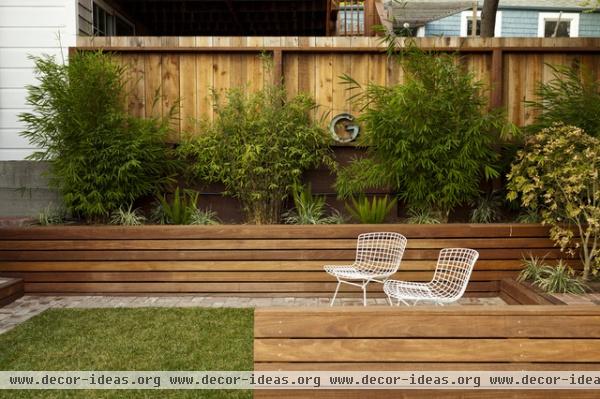
Clumping bamboo. Clumping bamboo is a noninvasive grower with clumps of compact, nonspreading culms (stems). It is well suited to smaller spaces because of its manageable mature size (most varieties top out at 8 to 16 feet in temperate climates) and compact growth habit. These plants tend to have slimmer culms and take on the appearance of a bamboo hedge. Clumping bamboo does not require containment and flourishes in a wide variety of situations in a small garden.
Tip: Fargesia bamboo is one of the best clumping bamboo species for the small garden and fares well in a variety of light conditions. My favorite variety is the low-maintenance Fargesia robusta, which grows to a maximum height of 14 feet in a temperate climate. It's also the bamboo variety preferred by panda bears — but sadly, this isn’t taken advantage of where I live!
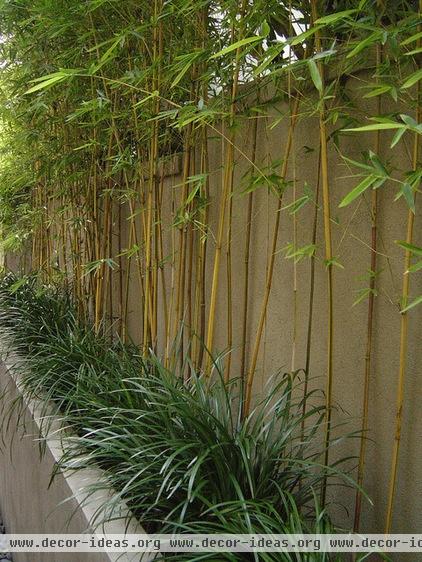
Running bamboo. Running bamboo has a tendency to spread out vigorously, so it takes more planning and oversight to incorporate it into a small garden space. But that doesn't mean it should be taken out of the equation altogether. Running bamboo's thicker and well-spaced culms provide more flexibility in the landscape. Side branches can be removed to reveal the often-colorful culms and allow for views through a bank of bamboo to a surrounding garden. Removing branches also proves effective when running bamboo is planted up against a wall, where the shadows of the stripped culms add drama and year-round interest.
Tip: Of the many options available for running bamboo, my favorites for small gardens are Phyllostachys nigra (black bamboo) and Phyllostachys aurea (golden bamboo) because of their slow growth rate and stunning culm coloring. Golden bamboo works well against a dark backdrop, and black bamboo provides great contrast to lighter plantings in the garden.
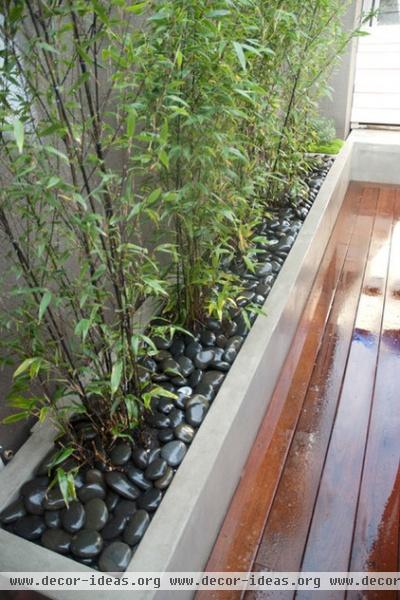
Growing bamboo in a container. Containing root growth is a big concern with running bamboo plantings. Some running bamboo can flourish in a container. Because the plant is above ground and often surrounded by hardscape, all the growth is concentrated within the contained space. You will need to make sure the container is well irrigated, though, or your bamboo's leaves may go brown.
Tip: Bamboo doesn't do well in drought situations, so automated irrigation systems are a great way to ensure regular watering.
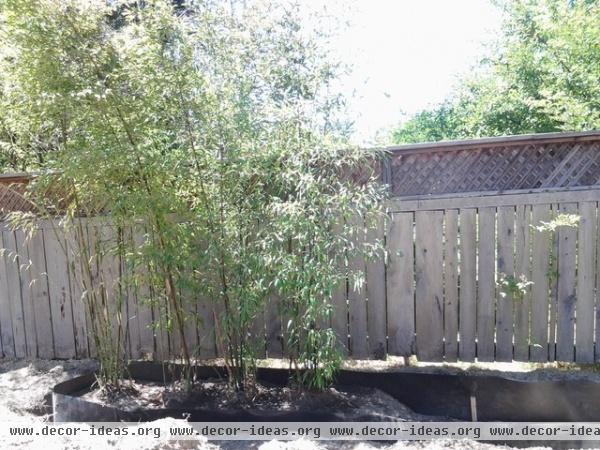
Inground bamboo. Running bamboo can also be grown inground but will require a root barrier to prevent growth into the surrounding garden bed. Bamboo barrier (often called rhizome barrier) is thick plastic sheeting that sinks at least 3 feet into the ground surrounding the bamboo plants, with a couple of inches protruding above ground level. Rhizomes are redirected into the designated bamboo area, and the surrounding garden is protected from bamboo growth. River rock placed around the base of the plants is an effective way to conceal the bamboo barrier and complements the architectural culms.
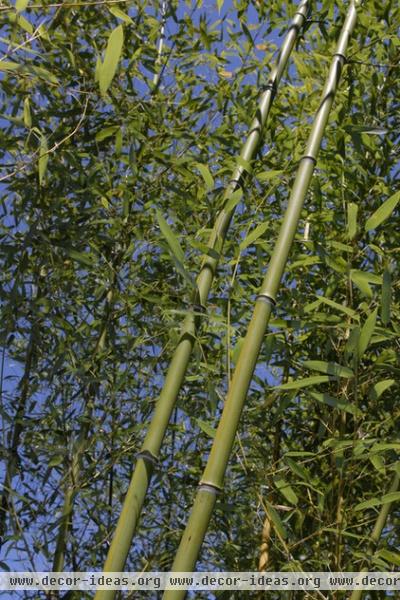
Vertical space. Running bamboo is taller than clumping bamboo, so you'll need to consider the amount of vertical space available. The plant's height can be controlled by cutting out culms that get too tall at the base of the plant, leaving the surrounding shorter culms to fill the space.
Tip: Never "top" bamboo plants, as they will develop unsightly pom-pom-like masses of leaves at the cut point, and the graceful, natural form of the plant will be compromised.
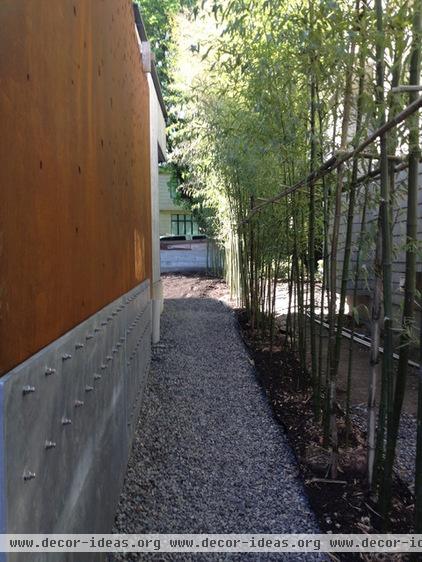
Since bamboo is so flexible, taller specimens often lean under the weight of their top branches. This can cause a problem in tight spaces. You can manage bending bamboo with a ladder system made of dried bamboo upright supports attached to horizontal rungs.












